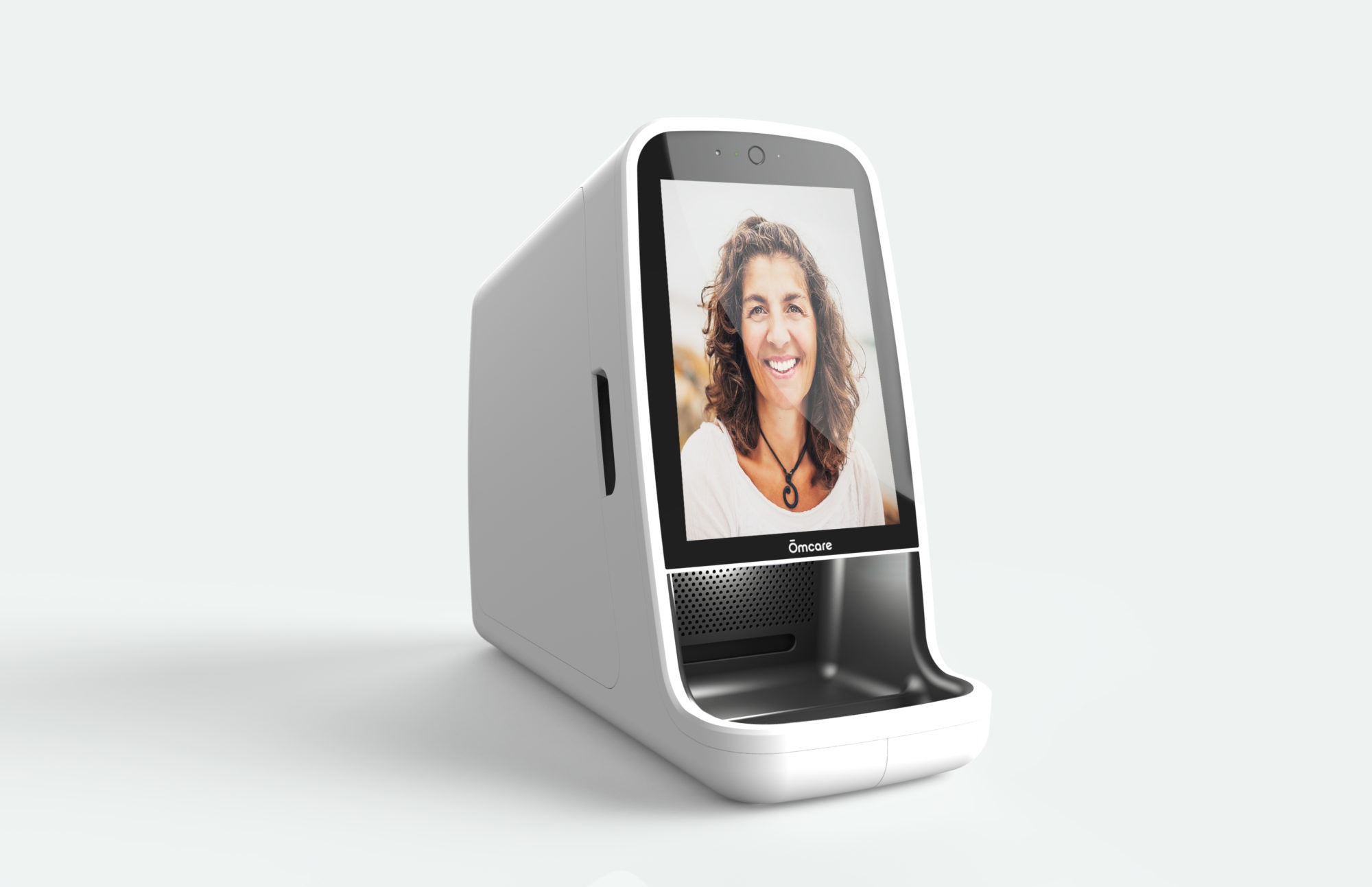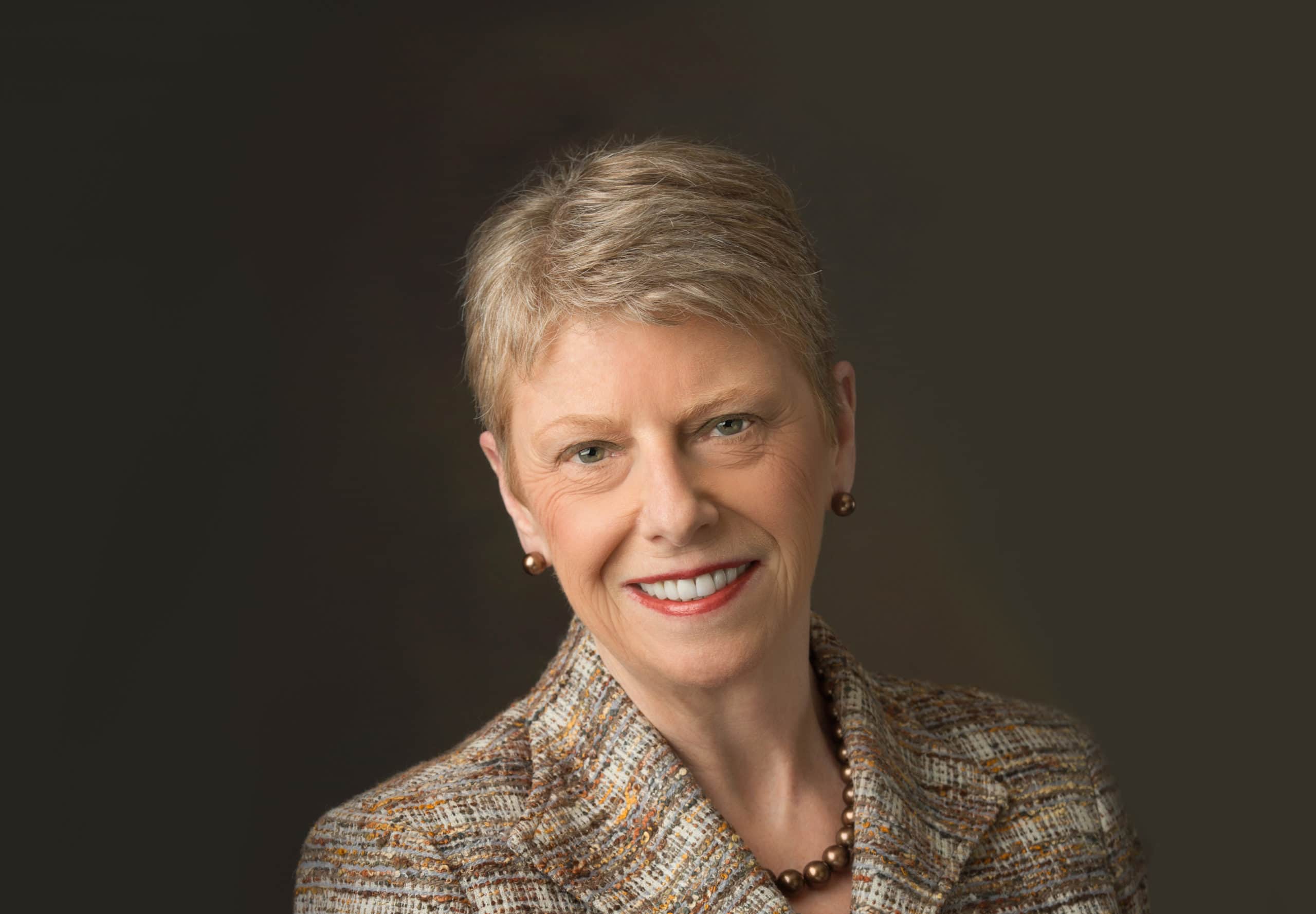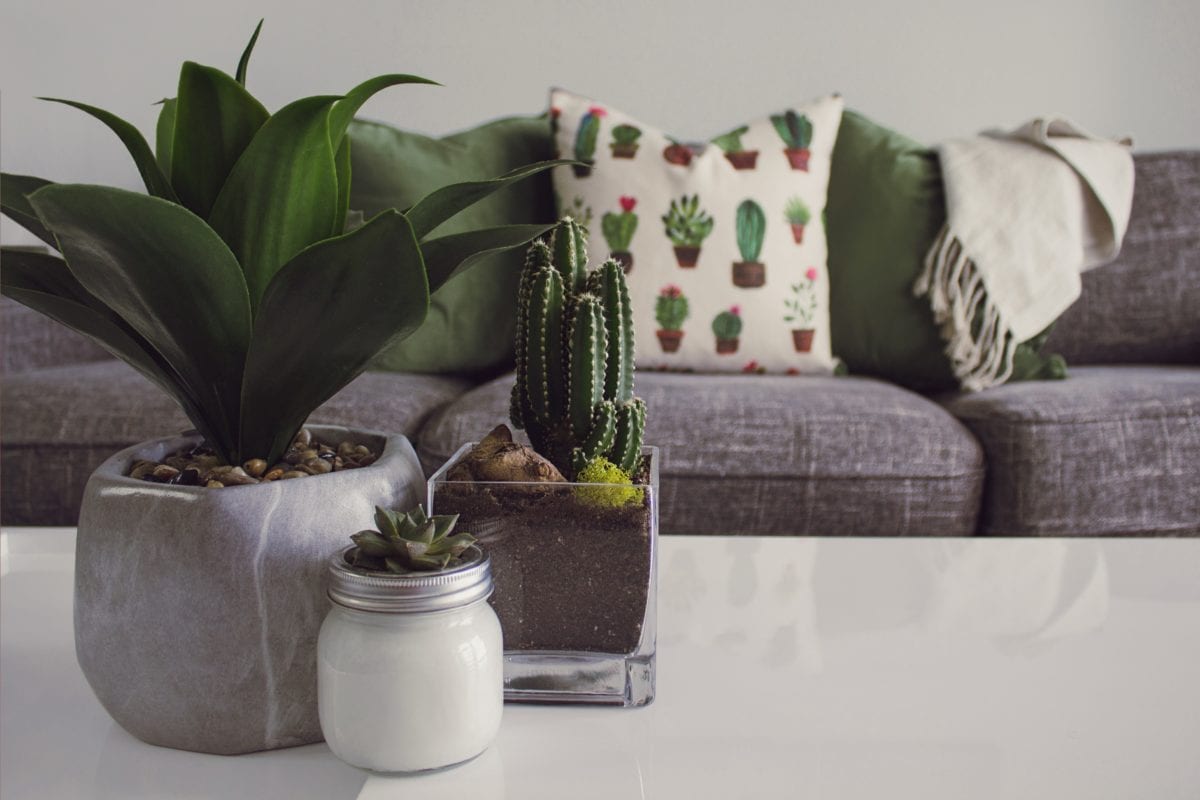A test of pills: Ecumen, Thrifty White to join unique telemedicine pilot project
What could be handier? A new machine will dispense prepackaged prescription meds at home, while at the same time allowing the elderly patient to video chat with family and medical staff.
A Burnsville company is partnering with Ecumen and Thrifty White Drug on a pilot project to do just that. Ōmcare has designed its Telemed System to help make sure older adults are taking their medications as prescribed -- at the right time, in the right way.
The Telemed device can hold 15 to 30 days worth of medication, which for the pilot project will be provided by Thrifty White Drug -- individually packaged and pre-slit for easy opening.
The three-way video system allows family or medical staff to call when it’s medication time, and to check in, chat a bit, and make sure the patient is taking the medicine as prescribed.
“It’s the first of its kind, it’s really innovative,” said Brett Anderson, Ecumen vice president of health and clinical services.
Read the full article from the Detroit Lakes Tribune here.
Ōmcare partners with Ecumen & Thrifty White Pharmacy
BURNSVILLE, Minn. (November 13, 2019)—Ōmcare, a wholly-owned subsidiary of Anser Innovation, announced today that it will partner with Ecumen, a leading provider of housing and care resources for older adults, and Thrifty White Pharmacy, a Midwest-based pharmacy chain of retail, long-term care and telepharmacy locations, to evaluate the ability of the Ōmcare Telemed System to improve medication adherence, reduce costs and assist caregivers.
According to Lisa Lavin, founder and CEO of Ōmcare, the pilot will launch in early 2020 at select Ecumen assisted living communities in Minnesota. As part of the pilot, residents who currently receive door-delivered medication assistance will instead receive medication assistance from their caregivers via the Ōmcare Telemed System. The two-way, interactive Ōmcare video and medication dispensing system will be preloaded with pouched multi-dose medications from Thrifty White Pharmacy, per each individual’s prescription drug regimen.
The Ōmcare Telemed System gives caregivers of all types—physicians, pharmacists, care providers, or family members—the ability to see and speak to those who need assistance with medication adherence and to confirm it's the right pill, right time, right person. The easy-to-use Ōmcare system is designed to facilitate remote monitoring via visual confirmation of a patient’s actions, which supports telehealth and virtual care services and gives family members greater peace of mind.
Read the full article from HomeCare here.
Ōmcare partners with Ecumen and Thrifty White Pharmacy
October 31, 2019PressPress Releases,News
NEWS RELEASE
(For immediate release)
Ōmcare partners with Ecumen and Thrifty White Pharmacy to launch pilot program using Ōmcare® Telemed System to improve medication adherence for older adults
Ōmcare’s web-enabled, audiovisual medication dispensing telemedicine system ensures right medication, right person, right time
BURNSVILLE, MN (October 31, 2019) – Ōmcare, a wholly-owned subsidiary of Anser Innovation, announced today that it will partner with Ecumen, a leading provider of housing and care resources for older adults, and Thrifty White Pharmacy, a Midwest-based pharmacy chain of retail, long-term care, and telepharmacy locations, to evaluate the ability of the Ōmcare® Telemed System to improve medication adherence, reduce costs, and assist caregivers.
According to Lisa Lavin, founder and CEO of Ōmcare, the pilot will launch in early 2020 at select Ecumen assisted living communities in Minnesota. As part of the pilot, residents who currently receive door-delivered medication assistance will instead receive medication assistance from their caregivers via the Ōmcare Telemed System. The two-way, interactive Ōmcare video and medication dispensing system will be preloaded with pouched multi-dose medications from Thrifty White Pharmacy, per each individual’s prescription drug regimen.
The Ōmcare Telemed System gives caregivers of all types – physicians, pharmacists, care providers or family members – the ability to see and speak to those who need assistance with medication adherence and to confirm right pill, right time, right person. The easy-to-use Ōmcare system is designed to facilitate remote monitoring via visual confirmation of a patient’s actions, which supports telehealth and virtual care services and gives family members greater peace of mind.
“Ecumen and Thrifty White are ideal partners for this pilot because they share our passion for innovation and they have the infrastructure and expertise to test and validate the ability of the Ōmcare system to deliver on our promise of right pill, right time, right person,” said Lisa Lavin, founder and CEO of Ōmcare. “By combining remote care via video technology with the convenience of multi-dose packaging, we hope to demonstrate that this approach can save money while improving patient outcomes and the caregiving experience.”
Multi-dose packaging for pharmaceuticals is expected to grow at a rate of 5.9% between now and 2023. This growth is due in large part to the connection between the use of multi-dose packaging and improved medication adherence, which ultimately influences clinical outcomes and health care costs.
"We've been actively working to identify the best innovations in technology to support the independence and individual needs of those we serve," said Brett Anderson, vice president of health and clinical services, Ecumen. "Specific to medication administration, multi-dose packaging is both efficient and secure. We're excited to move towards a pilot in partnership with Thrifty White Pharmacy and Ōmcare to test this interactive technology."
Like Ōmcare and Ecumen, Thrifty White Pharmacy is also well-known for its innovation and commitment to integrating telemedicine capabilities into pharmacy delivery. In 2003, the company opened its first telepharmacy site. This concept allows a trained, certified and experienced pharmacy technician to fill and dispense prescription medications that have been verified by a pharmacist over an audio-video link. The success of this solution allowed Thrifty White Pharmacy to provide pharmacy services into communities that otherwise would have no prescription services.
“Our partnership with Ōmcare and Ecumen will allow us to help patients maintain independence as long as possible, while supporting the concept of aging in place in a way that has never been done,” said Tim Weippert, chief operating officer, Thrifty White. “Because medication adherence is one of the primary needs of our aging population, technology like the Ōmcare system can promote healthy outcomes and quality of life for patients and caregivers.”
To learn more about the pilot or the commercial availability of the Ōmcare Telemed System, visit. www.omcare.com.
###
For more information:
Barbara Tabor, APR
(651) 450-1342
About Ōmcare
Ōmcare is a health technology company focused on extending the reach of caregivers, increasing medication adherence, and improving treatment outcomes by harnessing the power of remote care and two-way video technology. By partnering with pharmacies, payers, providers, and family caregivers, Ōmcare strives to help people live healthier, more vibrant, independent lives. Learn more at www.omcare.com. Follow on Twitter (@Omcare_Health) and on LinkedIn.
About Ecumen
Founded in 1862 and based in Shoreview, MN, Ecumen is one of the nation's largest nonprofit providers of older adult care, operating nearly 100 properties and services in more than 40 communities in 8 states - Minnesota, North Dakota, Wisconsin, Michigan, Idaho, Ohio, Indiana and Tennessee. In addition to providing a breadth of senior housing options and care resources, Ecumen provides consulting services in management, marketing and development, and has developed innovative cooperative living communities that support age-friendly living. The company's national reputation for innovative programming and its commitment to person-centered care that focuses on individual needs helps people to live in the ways that matter most to them.
About Thrifty White
Headquartered in Plymouth, MN, Thrifty White is a regional chain of 100 pharmacies and 82 associated Independent Retailers operating in the upper Midwest, with locations in Minnesota, North Dakota, South Dakota, Iowa, Montana, and Wisconsin. Thrifty White is one of the nation’s one hundred largest Employee Stock Ownership companies with 100% employee ownership. This unique ownership structure allows Thrifty White to focus on the long-term strength and growth of the company. Thrifty White was named the 2016 national “Pharmacy Innovator of the Year” by Drug Store News for the company’s efforts to continually move the practice of pharmacy forward. The company is one of the nation’s leaders in developing a Medication Synchronization program which allows patients to have all of their maintenance prescriptions filled on one day each month. This service dramatically improves medication adherence and lowers overall medical costs.
Ōmcare to preview new Telemed System at Leading Age Expo
October 10, 2019Press,Age TechPress Releases,News
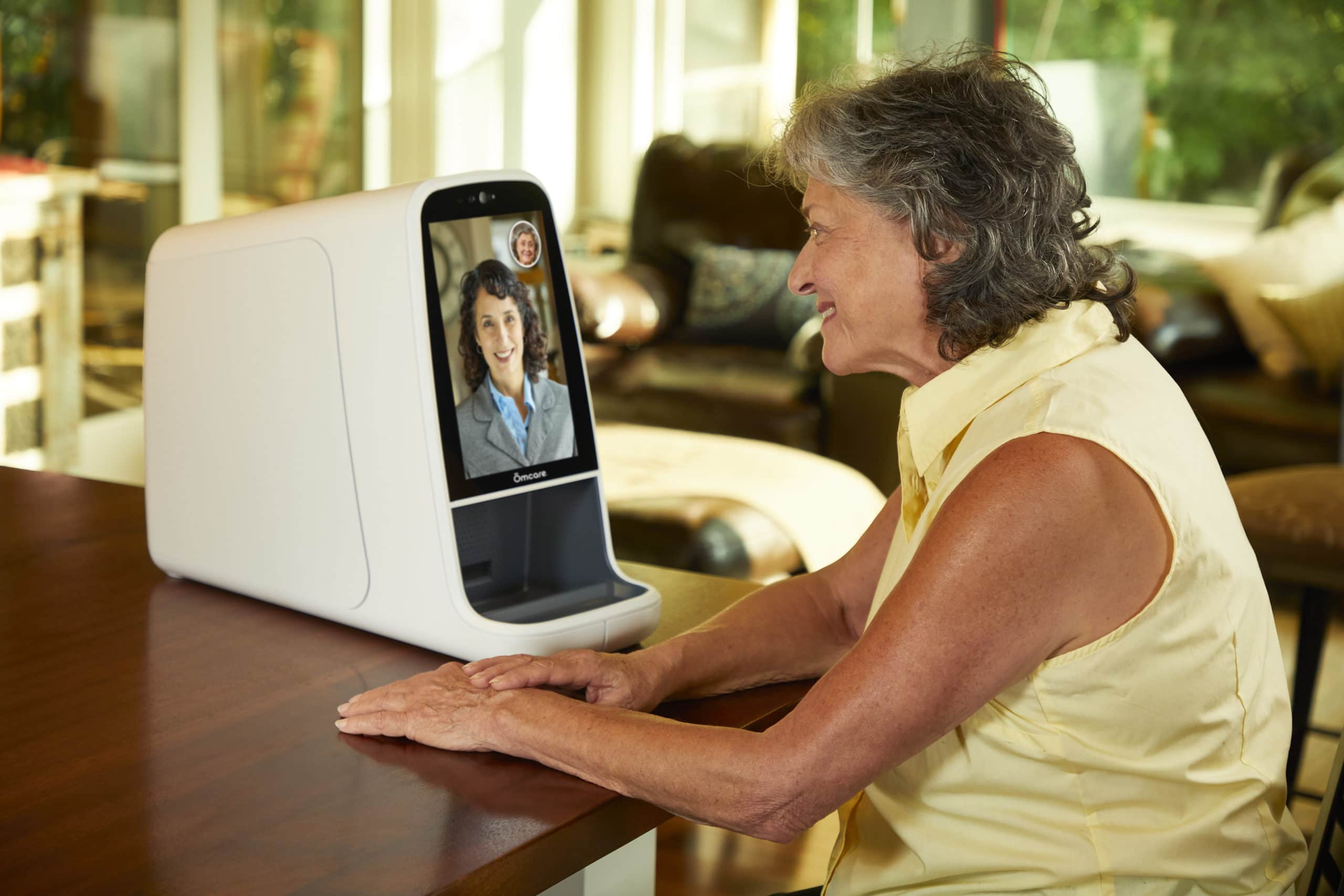
The secure, interactive Ōmcare Telemed System gives caregivers of all types – from physicians, pharmacists, and home care providers or family members – the ability to see and speak to elderly or disabled dependents and to visually confirm compliance with medication treatment plans from anywhere. Once pre-loaded with pouched, multi-dose medications based on an individual patient’s prescription schedule, the Ōmcare system dispenses medications as scheduled and facilitates remote visual confirmation of a patient’s actions. In essence, Ōmcare is a conduit for telehealth and virtual care services and ultimately provides family members greater peace of mind.
According to Lisa Lavin, the two-way video capabilities of the Ōmcare system can be used by individual caregivers or senior living facilities to ensure proper medication adherence which can significantly impact quality of life and clinical outcomes.
“Sticking to a medication plan can be difficult if our health and mental capacity is compromised. This aspect of caregiving is not only stressful, but it can have significant negative side effects if not done properly,” said Lisa Lavin, founder and CEO of Ōmcare. “The Ōmcare Telemed System fosters care from anywhere and creates a connection between patients, family caregivers, and medical care teams and promises visual confirmation of medication adherence. This level of care and collaboration has been shown to improve outcomes and reduce costs for patients, while creating a more positive experience for all.”
According to Lavin, the company will begin piloting the Ōmcare Telemed System with pharmacy and assisted living partners starting in first quarter 2020 and anticipates direct-to-consumer sales to begin next year, as well.
###
For more information:
Barbara Tabor, APR / (651) 230-9192 / barbara@taborpr.com
About Ōmcare
Ōmcare is a health technology company focused on extending the reach of caregivers, increasing medication adherence, and improving treatment outcomes by harnessing the power of remote care and two-way video technology. By partnering with pharmacies, payers, providers, and family caregivers, Ōmcare strives to help people live healthier, more vibrant, independent lives. Learn more at www.omcare.com. Follow on Twitter (@Omcare_Health) and on LinkedIn.
Jeannine Rivet named to Anser Innovation Board of Directors in preparation for Ōmcare launch
September 19, 2019PressPress Releases,News
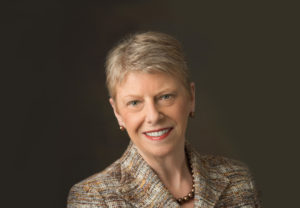
Ōmcare, a wholly-owned subsidiary of Anser Innovation, is a Minnesota-based health technology company that aims to extend the reach of caregivers and improve medication adherence and outcomes through its Ōmcare Telemed System, which gives caregivers of all types – from physicians and pharmacists to home care providers or family members – the ability to see and speak to elderly or disabled dependents and confirm compliance with medication treatment plans from anywhere. The easy-to-use Ōmcare system is designed to facilitate remote monitoring and interaction via visual confirmation of a patient’s actions, which supports telehealth and virtual care services, and gives family members greater peace of mind.
According to Lisa Lavin, founder and CEO of Ōmcare, the company recently earned its third patent from the United States Patent and Trademark Office (U.S. Patent No. 10,347,377) for the company’s web-enabled, audiovisual, medication-dispensing telemedicine system for the home.
“Our society is aging, and the number of seniors who need health care assistance is rapidly outpacing the population of potential caregivers. At the same time, the cost of non-adherence to medication plans exceeds $300 billion,” said Lavin. “Jeannine has a unique perspective as both a former clinician and managed care executive that is essential to helping us change this dynamic and achieve our mission of enabling care from anywhere.”
Rivet served as executive vice president of UnitedHealth Group, working with and on behalf of all business segments in areas focused on strategic relationships, clinician advancement, culture, and social responsibility. Previous roles at UnitedHealth Group include CEO of UnitedHealthcare, CEO of Ingenix, and CEO of Optum. Rivet currently serves on the Board of Directors for ABIOMED, Inc. and Solutran.
Rivet received a Master’s in Public Health from Boston University. She also holds a Bachelor of Science in Nursing from Boston College and practiced as a Registered Nurse for several years prior to entering the managed care industry. She has been recognized by the American Association of Health Plans, Boston University School of Public Health, Fortune magazine, Girl Scouts of Minnesota and Wisconsin River Valleys, Minneapolis St. Paul Business Journal, Minnesota’s City Business, Minnesota Women’s Health Leadership TRUST, Twin Cities Business magazine, Women Business Leaders in Healthcare, Linkage, and the American Association of Colleges of Nursing. She also is a Fellow of the American Academy of Nursing.
“I am excited to join the Anser Innovation Board of Directors and to be engaged for the launch of Ōmcare,” said Rivet. “Extending the reach of caregivers while maintaining quality and reducing cost is critical for our healthcare system today, and technology like the Ōmcare system will support this aim.”
###
For more information:
Barbara Tabor, APR / (651) 450-1342 / barbara@taborpr.com
About Ōmcare
Ōmcare is a health technology company aspiring to extend the reach of the caregiver, increase medication adherence, and to improve treatment outcomes by harnessing the power of remote care. We aim to achieve this through our proprietary interactive technologies - promising right pill, right time, right person. By partnering with pharmacies, payers, providers, and family caregivers, our vision is to help people live healthier, more vibrant, independent lives.
Connected care and remote patient monitoring prove to be cost-effective methods to improve patient outcomes, medication adherence, and patient satisfaction
August 20, 2019Age Tech,Senior Care,Medicare AdvantageWhite Papers
Exclusive technology from Ōmcare aims to eliminate common breakdown in chain of communication between patients, providers, and family caregivers.
By Lisa Lavin, founder and CEO, Ōmcare
The United States population is aging and, in the process, they will require more in the way of long-term care support and services. In fact, it’s estimated that between 2015 and 2050, the senior population will more than triple, with half of these individuals expected to need long-term care, which will come from either skilled nursing facilities or from adult children or family members. According to projections produced by the Congressional Budget Office, due to population growth, long-term care expenses could more than double from 1.3% of gross domestic product (GDP) in 2010 to 3% of GDP in 2050.[i]
In either scenario, the high cost of care creates financial hardships for individuals and families, taxes the personal time and relationships between family members, and can even impact the professional lives of caregivers. According to a 2016 report by AARP, family caregivers are spending roughly $7,000 per year ($6,954) in all out-of-pocket costs related to caregiving: household expenses, medical expenses, and more.[ii] The average family caregiver spends roughly $7,000 per year, or nearly 20 percent of their annual income, on out-of-pocket costs, according to AARP estimates.[i]
A common issue that often complicates caregiving, influences patient outcomes, and contributes to rising costs, is lack of medication adherence by patients. Nonadherence accounts for up to 50% of treatment failures, around 125,000 deaths, and up to 25% of hospitalizations each year in the United States.[iii] Studies show that 26% of readmissions are potentially preventable and medication-related, the most common of which was nonadherence due to patient choice (23.8%).[iv]
According to estimates by the IMS Institute, better medication management could produce $213 billion in savings annually, of which $105 billion would be from improved adherence.[v]
The ripple effect of caregiving needs
While the impact of increased caregiving needs for the aging population are many, two of the most significant areas of impact are related to cost and caregivers.
Financial impact. With healthcare costs set to hit more than $2.3 trillion, the need for more cost-efficient care has never been more important. Consider the fact that the annual median cost for nursing facilities ($97,455 for a private room) is more than double the median income of older households ($42,113). Likewise, according to the National Association of Home Care, the average cost of care from a skilled nursing facility is $544 dollars per day, while the average cost of home health care per visit is $132 dollars.[i]
On average, an American turning 65 today will incur $138,000 in future long-term care costs.[ii] Families will pay about half of the costs themselves out-of-pocket, with the rest covered by public programs and private insurance.[x] While most people with long-term care needs will spend relatively little on their care, about one in six (17%) will spend at least $100,000 out-of-pocket.[i]
Caregiver impact. Approximately 35 million Americans provided unpaid care to an adult age 50 or older in 2015. The vast majority (85%) were caregivers for a relative, primarily an aging parent.[vi] The term ‘sandwich generation' – the label used to describe adult children who are simultaneously caring for their children and their aging parents – is becoming so commonplace that it was added to the Merriam-Webster Dictionary in 2006. However, the dictionary fails to mention the heavy financial and emotional stress that being a part of this generation can cause on caregivers.[vi] Caregivers often experience the following:
- Caregivers report high rates of depressive symptoms and mental health problems, compounded with the physical strain of caring for someone who cannot perform activities of daily living, such as bathing, grooming and other personal care activities.[vii]
- 6 out of 10 (61%) caregivers experience at least one change in their employment due to caregiving such as cutting back work hours, taking a leave of absence, receiving a warning about performance/attendance, among others.[viii]
- 49% arrive to their place of work late/leave early/take time off, 15% take a leave of absence, 14% reduce their hours/take a demotion, 7% receive a warning about performance/attendance, 5% turn down a promotion, 4% choose early retirement, 3% lose job benefits, and 6% give up working entirely.[viii]
Further exacerbating these factors is the poor or inconsistent communication that occurs between patients, caregivers, and healthcare providers. A study by the Accreditation Council for Graduate Medical Education (ACGME) found that 69% of health care providers do not have a standardized hand-off process – a real-time process of passing patient information from one caregiver to another – and only 20% have some standardization. This lack of process can create inaccuracies that lead to extended stays in clinical facilities or that complicate medication and therapy adherence outcomes.[ix]
Telehealth solutions impact all stages of care
Amidst rising costs and changing demographic needs, telemedicine has emerged as a viable solution for doctors, patients, employers, and insurance providers to cut costs and save money.[x] It’s no surprise then that utilization of telemedicine is growing. According to Deloitte, physicians conducted about 100 million telemedicine appointments globally in 2014, which generated potential savings of more than $5 billion when compared to the cost of in-person doctor visits.[x] From 2014 to 2018, the use of non-hospital-based provider-to-patient telehealth grew 1,393%.[xi]
New telehealth and remote monitoring technologies are fundamentally changing the way people interact with health care.[xii]
Remote patient monitoring
Remote patient monitoring is a digital health solution that captures and records patient physiologic data outside of a traditional health care environment.[xii] As providers increasingly turn to remote patient monitoring technology to improve patient outcomes, limit costs, and cut down on using more expensive services, healthcare industry newcomers and legacy players alike are vying for a piece of this growing market.[xiii]
Remote patient monitoring is particularly helpful in managing chronic conditions and improving medication adherence because it provides visibility into patients’ lives outside of their scheduled appointments, which has historically been a barrier to timely and effective diagnosis and management.[xiii]
With data collected over time, care team members can manage and treat chronic conditions in a way that is effective, timely, and realistic to the patient and caregiver’s lifestyles. The data generated through this approach can help facilitate conversations between patients and physicians and facilitate opportunities to intervene quickly to avoid complications.[xiii]
In addition to providing care teams with better, more actionable information earlier, remote patient monitoring has been praised for engaging patients in their own care by providing them access to their own data so they can better understand the impact of their treatment and advocate for their medical needs.[xiv]
Connect caregivers with the right technology
From tracking vital signs with remote monitoring devices to communicating quickly with a nurse through a web portal to receiving on-the-spot care from a doctor via video chat, telehealth aims to make life easier.[xiv]
The right technology can give health care providers and caregivers a means of communication that is essential to improving patient outcomes. For example, patient monitoring programs that allow virtual check-ins enable patients to extend the duration between doctor's visits or unplanned hospital stays. Meanwhile, a KLAS Research report surveying 25 healthcare organizations found 38% of healthcare organizations using remote patient monitoring programs for chronic disease management reported reduced admissions, while 17% cited cost reductions.[xiii]
Older adults with long-term care needs should be able to live independently as they age while limiting stress on family caregivers. Telehealth strategies can support this process by improving access to care and ensuring its quality, while reducing the strain put on family members by increased time requirements, added mental and emotional stress, and financial burdens of providing long-term care to an aging loved one. The right technology can address these issues and allow for loved ones to age gracefully and in their best health.
About Ōmcare
Ōmcare is a health technology company aspiring to extend the reach of the caregiver, increase medication adherence, and to improve treatment outcomes by harnessing the power of remote care. We aim to achieve this through our proprietary interactive technologies - promising right pill, right time, right person. By partnering with pharmacies, payers, providers, and family caregivers, our vision is to help people live healthier, more vibrant, independent lives.
References
[i] "Long-Term Services And Supports For Older Americans: Risks And Financing Research Brief". ASPE, 2019, https://aspe.hhs.gov/basic-report/long-term-services-and-supports-older-americans-risks-and-financing-research-brief.
[ii] "Caregiving Innovation Frontiers". Aarp.Org, 2019, https://www.aarp.org/content/dam/aarp/home-and-family/personal-technology/2017/08/caregiving-innovation-frontiers-2017-aarp.pdf.
[iii] Kim, Jennifer. "Medication Adherence: The Elephant In The Room". Uspharmacist.Com, 2019, https://www.uspharmacist.com/article/medication-adherence-the-elephant-in-the-room.
[iv] "Up To 26% Of Hospital Readmissions Are Preventable And Medication-Based". Drug Topics, 2019, https://www.drugtopics.com/drug-topics/news/26-hospital-readmissions-are-preventable-and-medication-based.
[v] IMS Institute for Healthcare Informatics, “Avoidable Costs in U.S. Healthcare: The $200 Billion Opportunity from Using Medicines More Responsibly,” June 2013
[vi] "The Sandwich Generation | What Is The Sandwich Generation?". Seniorliving.Org, 2019, https://www.seniorliving.org/caregiving/sandwich-generation/.
[vii] "Caregiver Health | Family Caregiver Alliance". Caregiver.Org, 2019, https://www.caregiver.org/caregiver-health.
[viii] "Caregiving In The U.S.". Aarp.Org, 2019, https://www.aarp.org/content/dam/aarp/ppi/2015/caregiving-in-the-united-states-2015-report-revised.pdf.
[ix] Wagner R, et al. CLER 2016 National Report of Findings, Issue Brief #5: Care Transitions. Chicago, Illinois: Accreditation Council for Graduate Medical Education, March 2017.
[x] "Telemedicine Research Papers: Trends In Healthcare - Evisit". Evisit, 2019, https://evisit.com/resources/telemedicine-trends/.
[xi] fairhealth.org. (2019). A Multilayered Analysis of Telehealth. [online] Available at: https://s3.amazonaws.com/media2.fairhealth.org/whitepaper/asset/A%20Multilayered%20Analysis%20of%20Telehealth%20-%20A%20FAIR%20Health%20White%20Paper.pdf.
[xii] "Digital Health Implementation Playbook". Ama-Assn.Org, 2019, https://www.ama-assn.org/system/files/2018-12/digital-health-implementation-playbook-REV1.pdf
[xiii] "The Technology, Devices, And Benefits Of The Growing Remote Patient Monitoring Market". Business Insider, 2019, https://www.businessinsider.com/remote-patient-monitoring-industry-explained.
[xiv] "Telehealth And Seniors | Updated For 2019 | Aginginplace.Org". Aginginplace.Org, 2019, https://www.aginginplace.org/telehealth-and-seniors/.
Ōmcare secures 3rd patent for remote audiovisual medication dispenser
July 31, 2019Press,Age TechPress Releases
BURNSVILLE, MN (July 31, 2019) — Ōmcare, LLC announced today that the United States Patent and Trademark Office has issued Ōmcare’s third patent (U.S. Patent No. 10,347,377) for the company’s web-enabled, audiovisual, medication-dispensing telemedicine system for the home.
The Ōmcare Telemed System gives caregivers of all types – from physicians, pharmacists, and home care providers or family members – the ability to see and speak to elderly or disabled dependents and to confirm compliance with medication treatment plans from anywhere. The easy-to-use Ōmcare system is designed to facilitate remote monitoring via visual confirmation of a patient’s actions, which supports telehealth and virtual care services and gives family members greater peace of mind.
The addition of this patent will allow Ōmcare to bring products to market that meet the growing demand for remote monitoring technology that supports the long-term goals of improving patient outcomes, medication adherence, and quality of life.
“Our mission is to give caregivers of all types – from physicians, pharmacists, home care providers, and families – the ability to see, speak to, and confirm that patients and loved ones are following their care plans,” said Lisa Lavin, founder and CEO of Ōmcare. “Ōmcare extends the reach of caregivers into the home and promises real medication adherence.”
Lavin, a serial entrepreneur and technology innovator, created Ōmcare after realizing the potential for marrying advances in two-way, remote communications technology with the growing need and consumer demand for in-home care and aging in place. This is the fourth patent for Lavin, who holds three related patents for audiovisual and dispensary capabilities.
###
For more information: Barbara Tabor, APR / (651) 230-9192 / barbara@taborpr.com
About Ōmcare Ōmcare is a health technology company focused on extending the reach of caregivers, increasing medication adherence, and improving treatment outcomes by harnessing the power of remote care and two-way video technology. By partnering with pharmacies, payers, providers, and family caregivers, Ōmcare strives to help people live healthier, more vibrant, independent lives. Learn more at www.omcare.com. Follow on Twitter (@Omcare_Health) and on LinkedIn.
Top 3 reasons connected care requires telehealth
March 27, 2019Age Tech,Senior CareBlog
Interest in telehealth is increasing rapidly around the world, including here in the U.S. In fact, the telehealth market has grown over 250% since 2015 and is expected to exceed 15% CAGR* through 2025. This growth is attributed tech-enabled services and a regulatory environment that has started to embrace virtual connected care options.
The Health Resources Services Administration defines telehealth as the use of electronic information and telecommunications technologies to support long-distance clinical health care, patient and professional health-related education, public health and health administration. And while many consumers are just now becoming familiar with the term, it is most often understood as two-way video interactions with doctors or other medical professionals.
#1 - Telehealth is a conduit to enabling value based care
Telehealth has traditionally been considered by CMS as a stop-gap for people with access issues, either in rural area or constrained by limited mobility. A number of progressive health systems that are leading the shift to value based or outcomes based payment see telehealth as a critical component to keeping people healthy, especially seniors with multiple conditions who tend to be heavy utilizers.
#2 - The shortage of caregivers will strain an already strained system.
And for those in the Home Health business, incorporating more frequent remote touchpoints using video-enabled technology along with in-home visits aligns with a desire to create a tighter community of caregivers while offering a response to the new and growing shortage of qualified caregivers. By 2050, there will be 19 million Americans over the age of 85. At the same time, the number of available caregivers is projected to stay constant or decrease.
#3 - Cost avoidance and increased patient satisfaction is more possible.
Ultimately, weaving telehealth into the tapestry of the full healthcare continuum addresses everything from cost avoidance to better outcomes and greater patient satisfaction. And the data proves it. Organizations that embrace technology as a way to define patient needs and deliver personalized care will weather payment system transitions and demographic shifts much more successfully that those unwilling to see the shortcomings of the status quo.
At Ōmcare, we’re building the tele of telehealth right into our core of what we do. From connecting people to integrating a myriad of point solutions and remote monitoring technologies, we can help realize healthier, more affordable outcomes more quickly. Now, that’s healthy. In more ways than one.
Why in-home care is the next big healthcare opportunity
February 15, 2019Senior CareBlog
By Laurie Knutson, President
As you might imagine, having been active in the healthcare community for some 30+ years, I’ve seen some fairly significant changes and shifts in our industry. From the inception of Consumerism and High Deductible Plans, to Medicare Part D, implementation of the ACA, and a shift to retail medicine and growing need to redefine medication adherence, the industry keeps evolving.
Each change is well-intended and disruptive for stakeholders and individuals. And in every case, these changes have called for a societal shift and consideration for new ways of managing our health - financially, systematically and behaviorally.
And try as we might to design around the individual, it’s a struggle. We struggle to consider how regulations, advancing technology, payment models, and structural change impacts day-to-day lives and the care journey for each individual. The goal of putting the person at the center of the care model has been difficult to achieve.
But wait, at the intersection of technology and economic necessity there is innovation!
As the population ages, the broader healthcare ecosystem is beginning to embrace new thinking around what really matters to people. And this time, care actually IS centered around the person. It’s in-home care. Now more than ever, seniors in particular have a strong desire to remain in their homes as long as possible and the focus of the healthcare system is shifting to how best to achieve that end. Aging in place, in-home is valuable to the individual, their caregivers, and to the broader healthcare system. Here are 3 reasons why:
- In-home care saves money
The cost of healthcare isn’t just increasing, it’s becoming down right unaffordable. As the personal cost of care escalates, the vast majority of seniors will spend their entire retirement savings to keep up long before they planned. The average out of pocket medical costs for a 65 year old couple will be $218,000 over the next 20 years, excluding long-term care. And skilled nursing facility care center expense averages around $200,0001 year. Leaving the home can be financially devastating, and for many, it’s simply out of the question. Remaining in-home longer supported by care as needed, is more than the best option, it’s often the only option.
- In-home care complements an already evolving system
While retail offerings (ie., MinuteClinic, mobile care units, etc.) offer some level of convenience, seniors generally continue to receive care at their primary care clinic. Doctor visits require mobility, coordinating appointments and can be costly too. For many, getting to doctor appointments becomes the primary focus of day-to-day life. The increasing availability of telehealth and supplemental in-home services offers a new level of convenience for seniors when care can be safely administered without compromising quality. CMS is warming to the benefits of in-home care by broadening eligibility criteria and payment for appropriate telehealth and home-based care.
- In-home care addresses the impending shortage of caregiver resources
Oftentimes, remaining in-home requires active support from family caregivers. Employers are feeling the productivity pinch when employee caregiver responsibilities burden their time, wallets, and their own health. In situations where a family member isn’t a support option, individuals must retain community resources and paid staff to subsidize their care needs. The problem is that future demographics point to a looming human resource crisis nearly as alarming as the financial pressures of an aging population. Today there are 10 caregiver resources for every senior. By the year 2050, when the majority of baby boomers are over 75, that ratio will shrink to 3.2 Home Care providers and Senior Living facilities are already struggling to find workers. We need to embrace new models of remote care that align with demographics.
So where do we go from here? If in-home care saves money but the uptake in more non-traditional care models is slow, how might we get to both more quickly? And how can we better support family caregivers who fill the gaps that enable loved ones to age in place? Therein lies opportunity.
Startups, disruptors, and newcomers to in-home care have a role to play. I’m talking about the Best Buy, Alexa, Nest, Apple, Amazon, Simple Meds and Ōmcare’s of the world. New technologies are enabling a remarkable shift from an acute-case, illness-based system to a more connected system that includes care many professionals in many places. From personal care assistance, home healthcare providers, tech-enabled home security, remote monitoring and medication assistance, supporting the many needs of those aging in place is both an opportunity and a necessary change. There will certainly be disruption to existing stakeholders, however meeting the growing needs of our aging population is in everybody’s best interest. Creating a community of caregivers and using technology to align resources will help ensure better care, greater independence, financial sustainability, and well-being for the future.
There’s no silver bullet here. Instead, a more connected ecosystem of solutions will support our senior population segment and better serve their needs. And those who build into the fabric of existing systems will do this best, leveraging the power and creativity of many to keep the consumer at the center of their care.
At Ōmcare, we are passionate about connecting people with the resources they need to maximize their independence. As a video conduit into the home that enables remote medication dispensing, we address the most basic reason people are forced to leave their home; they can no longer manage their medications. We offer peace of mind to family caregivers, and more frequent monitoring and face-to-face conversations gives clinicians what they need to keep seniors healthy and well at home. And it’s easy to use, eliminating the need for multiple devices and logins.
Ōmcare makes the extension of care at home possible - for a longer period of time. We know that’s what matters most to seniors and their caregivers and we invite others to connect, work with and join us to achieve the goal of independence through better remote care, at home.
1 Source-Fool: https://www.fool.com/retirement/general/2016/01/26/20-retirement-stats-that-will-blow-you-away.aspx
2 Source- AARP: https://www.aarp.org/home-family/caregiving/info-08-2013/the-aging-of-the-baby-boom-and-the-growing-care-gap-AARP-ppi-ltc.html
What is medication non-adherence? Health and financial risks
December 28, 2018Age Tech,Senior CareBlog
Medication non-adherence. It’s a big problem. People are not taking the right pill at the right time. The health and financial risks associated with medication non-adherence impacts individuals, families and caregivers. Today, millions of people depend on others for their medications and, for those who manage multiple medications, it can be complicated and confusing. For many people, loved ones can’t always be there to keep track.
The Financial and Health Risks
Nearly 37% of seniors take 5 or more medications and one out of every ten seniors hospitalized are the result of the consumption of ill-timed, mistaken, or missed medication. The cost of medication non-adherence exceeds $300B and more than 125,000* deaths annually in the United States. That’s a high price to pay for both individuals and the healthcare system more broadly.
In addition to all of this information, it’s important to call attention to the cost of non-adherence at a more personal level, as oftentimes the expense of not taking medications shows up indirectly. The National Council Medical Director Institute published a report in September, 2018 stating that “medication non-adherence accounts for 30-50 percent of treatment failures and 10-25 percent of all hospital and nursing home admissions.” A host of other expenses from the ambulance to the Emergency Room are triggered by non-adherence. These unplanned expenses can be devastating for individuals living on a fixed income, and put additional financial pressure on Medicare and other public programs.
As it relates to better health, the cost of ill-planned or timed drug interactions means risking outcomes that could be debilitating to the patient in more ways than one. For many chronic conditions, improved health outcomes are difficult without proper adherence. A Network for Excellent in Health Innovation (NEHI) study showed that non-adherence could be tied back to an increased risk of hospitalization, while also providing evidence that mortality rate for heart disease and diabetes was 12.1 percent for non-adherence patients compared to 6.7 for adherent patients.** This is just one example of the implications of non-adherence reported in a specific population.
Reducing the Risks
So what can we do to reduce these risks? Several options are: increase access to or engaging the services of a paid caregiver, add more frequent communication with your provider to monitor your adherence activity, or find a technology-enabled medication assistance solution that your loved one can manage on their own. Since most people are reluctant to admit their shortcomings in taking their meds, it’s often unclear when non-adherence has become a liability.
Trust in Ōmcare
That’s why Ōmcare was created: to address medication non-adherence and offer remote care solutions through simple, face-to-face interactions and monitored remote pill dispensing that reduces the risk to financial and personal health outcomes. With Ōmcare you have remote, visual confirmation of adherence and a complete medication history that gives caregivers peace of mind, and provides better information for physicians and nurses to treat and diagnose.
Stay up to date with the latest from Omcare and the release of the Telemed System by subscribing to our email.
Sources:
*https://www.nacds.org/news/the-cost-of-medication-non-adherence/
**Network for Excellence in Health Innovation. (2016, September). Better Uses of Medicines for Diabetes Patients. Retrieved from https://www.nehi.net/writable/publication_files/file/better_use_of_medicine_for_patients_wieth_diabetes_nehi_9.8.2016.pdf
https://www.ncbi.nlm.nih.gov/pmc/articles/PMC3934668/



